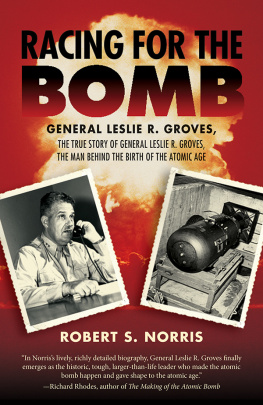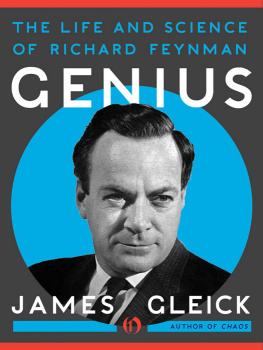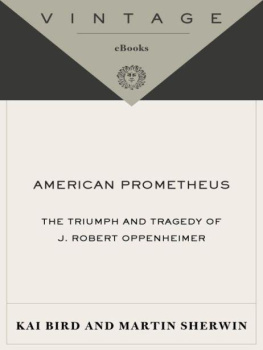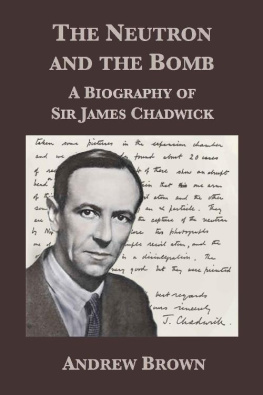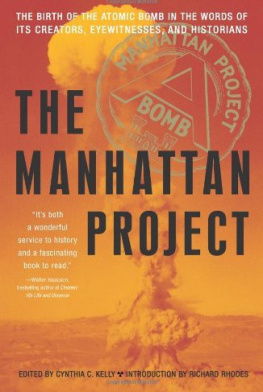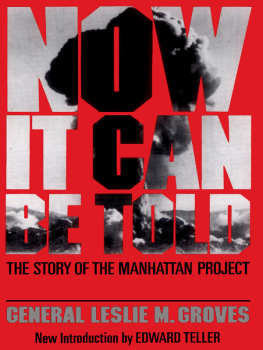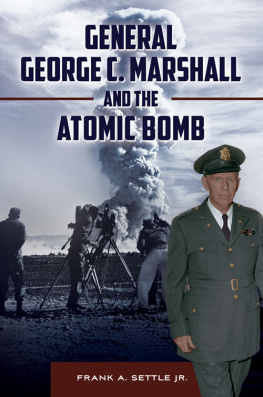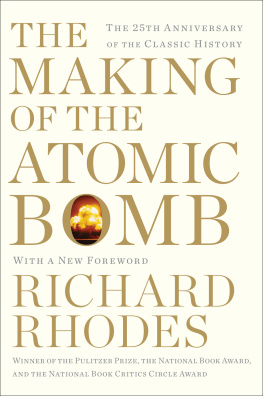
Copyright 2015 by James Kunetka
All rights reserved. No part of this publication may be reproduced or transmitted in any form or by any means electronic or mechanical, including photocopy, recording, or any information storage and retrieval system now known or to be invented, without permission in writing from the publisher, except by a reviewer who wishes to quote brief passages in connection with a review written for inclusion in a magazine, newspaper, website, or broadcast.
Regnery History is a trademark of Salem Communications Holding Corporation; Regnery is a registered trademark of Salem Communications Holding Corporation
Diagrams reprinted with permission from John Coster-Mullen
First ebook edition 2015: ISBN 978-1-62157-385-2
The Library of Congress cataloged the hardcover edition as follows:
Kunetka, James W., 1944-
The general and the genius: Groves and Oppenheimer: the unlikely partnership that built the atom bomb / James Kunetka.
pages cm
1. Atomic bomb--New Mexico--Los Alamos--History. 2. Manhattan Project (U.S.)--History. 3. Los Alamos National Laboratory--History--20th century. 4. Groves, Leslie R., 1896-1970. 5. Oppenheimer, J. Robert, 1904-1967. 6. Generals--United States--Biography. 7. Military engineers--United States--Biography. 8. Physicists--United States--Biography. I. Title. II. Title: Groves and Oppenheimer: the unlikely partnership that built the atom bomb.
QC773.A1K87 2015
355.825119092273--dc23
2015004467
Published in the United States by
Regnery History
An imprint of Regnery Publishing
A Division of Salem Media Group
300 New Jersey Ave NW
Washington, DC 20001
www.RegneryHistory.com
Manufactured in the United States of America
10 9 8 7 6 5 4 3 2 1
Books are available in quantity for promotional or premium use. For information on discounts and terms, please visit our website: www.Regnery.com.
Distributed to the trade by
Perseus Distribution
250 West 57th Street
New York, NY 10107
Books by James Kunetka
Non-fiction:
City of Fire
Oppenheimer: The Years of Risk
Fiction:
Warday
Natures End
Shadow Man
Parting Shot
For Robert D. Krohn
Who was there and who opened the door for me
Contents


T he partnership between General Leslie Richard Groves of the U.S. Army Corps of Engineers and the theoretical physicist J. Robert Oppenheimer is one of the great stories of the Second World War, and it was as unexpected as it was successful. There was little in either mans life before 1942 to suggest that the general and the physicist would ever meet, much less form a close working association to develop an atomic bomb. They came from very different cultural and economic backgrounds. Their careers alone would have kept them apart, had not the war thrown them together and changed their lives utterly. In Robert Oppenheimer, Leslie Groves found the man to help him achieve fame and success through the creation of a secret weapon that could end Americas greatest war, if not all wars. Oppenheimer did that by recruiting scientists and engineers, inspiring them and, under Grovess supervision, leading them in creating the new bomb. In Groves, Robert Oppenheimer found the man who would reinvigorate his career and give direction to his life. Groves did that by giving him an unimaginably grand scientific and engineering task, along with virtually unlimited resources, and an opportunity to serve his country in an unprecedented way.
Equally compelling, however, and the parallel subject of this book, is the story of the building of the atomic bomb itself. The conception and development of a theoretically complex and technologically advanced weapon, made from materials heretofore unimagined, in two and a half years is an extraordinary tale in its own right. And while the Manhattan Engineer District managed by Groves was a vast and expensive network of large industrial plants and smaller research installations, the atomic bomb was designed and built at a secret laboratory high in the mountains of northern New Mexico. It was on the plateau called Los Alamos that General Groves permitted Oppenheimer to gather some of the most talented scientific minds of the time for the sole purpose of making a weapon of war. Los Alamos was the heart of the Manhattan Project, and the story of the laboratory is inseparable from that of the atomic bomb.
Thousands of people in research laboratories and plants across the United States helped to create the atomic bomb, but the successful development of this weapon in record time is in no small part due to the complex, sometimes tense, but always productive partnership between Groves and Oppenheimer.
This book is not a biography of either Leslie Groves or Robert Oppenheimer. Fine, recent biographies of both men are cited in the bibliography. Nor is this book the story of the larger Manhattan Engineer District, more popularly known as the Manhattan Project. That history has been elegantly told by others as well. It is the story of two men, their wartime partnership, and the atomic bombs they helped to create.

Undertaking and completing such a history would not have been possible except for the support and assistance of many persons over the course of several decades. Although many of those who generously spent time with me and shared their wartime stories have since passed away, their contributions and place in history remain as strong and vivid as ever. It is to them that this book belongs. Many others assisted in the acquisition and declassification of documents and other historical materials, arranged interviews, and opened their personal collections and archives.
I am deeply grateful to Harold Agnew, Norris Bradbury, Robert Bacher, Hans Bethe, John Manley, Emilio Segre, Arthur Schellberg, Berlyn Brixner, Hugh Paxton, Bill Stratton, Carson Mark, Ralph Carlisle Smith, Marge Dube, Del Sundberg, Bill Regan, Faith Stevens, Art Freed, Dave Heimbach, Gilbert Ortiz, Bill Richmond, Al Van Vessem, Bill Norwood, Dorothy McKibbin, Frank and Jackie Oppenheimer, Peter and Virginia Oppenheimer, Peggy Pond Church, Alice Bullock, Barbara Storms, Ray and Elizabeth Gray, Malcolm and Emma Knowles, Priscilla Green Duffield, Bill Cunliffe, Jill Ellman, Jack Kahn, Walt Bramlett, Bob Masterson, Jeannene Mattingly, Les Redman, Louis and Eleanor Hempelmann, Charles Poisall, Charles Marshall, Melvin Neff, Richard Hewlett, and Edwin Reese.
More recently, I am indebted to Christina Hamblin at the Department of Energy, National Nuclear Security Agency, Office of General Counsel, for her help in processing FOIA requests. At the Los Alamos National Laboratory, I am grateful to Steve Sandoval and to the talented historian and archivist Alan Carr. Glen McDuff generously read the manuscript for scientific and technical accuracy.
Next page

